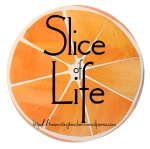
One tool that we utilize in our work is called the Analysis of Student Work (ASW). The process of the ASW opens up a conversation about formative assessment and also gives us an opportunity to hone in on what we are assessing. Once the formative assessment is administered, together we sort the student work into four categories: far below standard, approaching standard, meets standard, & exceeds standard. We then select one students work to represent each category. Using the student work, we define what the students are able to do and then determine what the learning needs are. Including what the students can do was a shift in thinking for me - I am not sure if it's human nature or if was just me, but it seems instinctual to view student work from a deficit model. I appreciate that the first step in the process is looking at strengths first - not deficits. I have observed more than once teacher reactions when they identify what their students can do - it really helps us all celebrate where the student(s) is at and be more cognizant about how to move the student forward.
In previous work I've done with grade level data teams when I was in the classroom, we had done quite a bit of placing students in red, yellow, and green zones. I am not saying that that work did not have value, but I am finding that it is easier to have a conversation about moving students to the next level instead of having this broad range of student who are strategic and intensive. I have found the conversations in the ASW process to focus on moving all students forward not just moving students out of the "red" or "yellow". I am refreshed by the number of conversations that have focused on specific ways to support students move from far below to approaching and attached to a specific standard or skill instead of "we have X number of students that still need to pass the statewide assessment". The ASW process fosters a culture of looking at every kid and supporting every kid.
The next step of the process involves looking for patterns and then we begin developing a plan for differentiating instruction. Differentiation is the focus for April so the ASW process will continue. My hope is that we follow this ASW process enough times that it just becomes second nature to teachers - that the act of having formative assessment, mental sorting of students, and meeting needs through differentiated instruction becomes like breathing and that teachers (including me) do all of it without thinking. It's habit.
I will say that one of my favorite ASW stories from this past week involves a science teacher that I support. She had chosen a writing prompt tied to a controversial topic (animal testing vs. organ on a chip). Right off the bat I was encouraged by the fact that she was selecting a task that integrates with the instruction provided in the English Language Arts. She then provided short articles for students to read and a number of activities to nudge students to take a stance. Her focus for the ASW was strictly on the ideas and content of the students' writing. Through the course of the conversation, she came to the conclusion that she needs to provide opportunities for students to debate and defend their position. The argument does not always need to appear in writing. She wants to foster the skill of thinking critically. Yes, it's all tied to common core state standards; however, it's tied to being a scientist as well. As we sat together she was formulating places within units to incorporate argument/debate. She also started verbally thinking through frequency of opportunity to pick a side and really defend it. For students that can already defend, she was developing ideas about how to build the skill of counter-arguement. The point is that SHE did the work - she figured it out. I did not sit and tell her what to do or how to do it. She came to the conclusion on her own. At one point, she stated, "you're really making me think here." It was at that moment that I knew I had asked the right question. It was at that point where I had that feeling of, "THIS is what it means to mentor." It's not about making a bunch of Kristins in the classroom. It's about supporting teachers to develop into their own teacher self.
My growth as a mentor was evident to me during that particular Analysis of Student Work. It is a good feeling.











